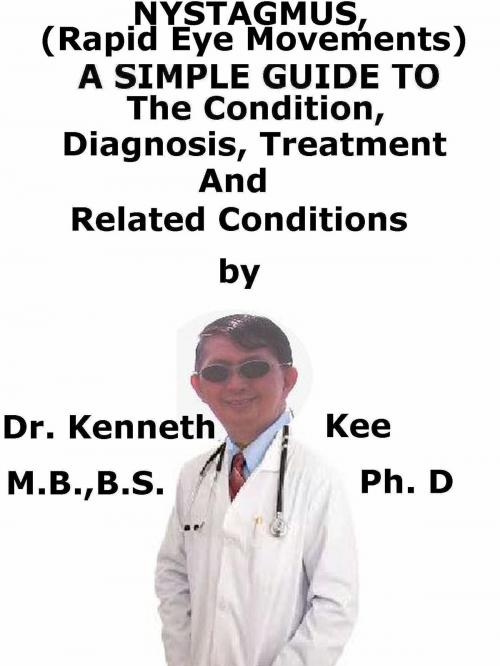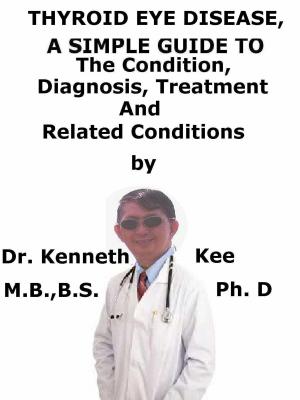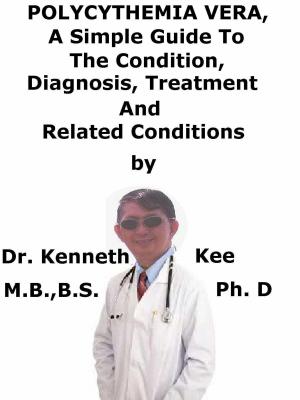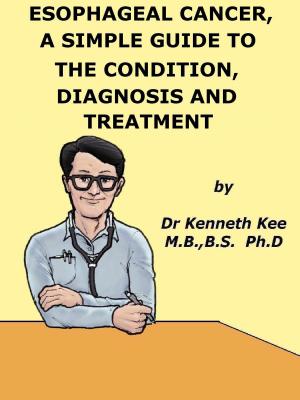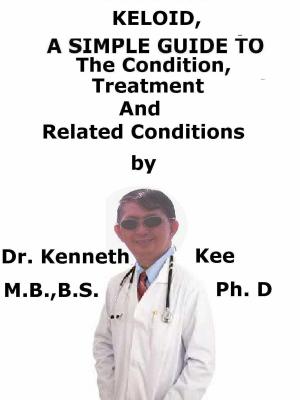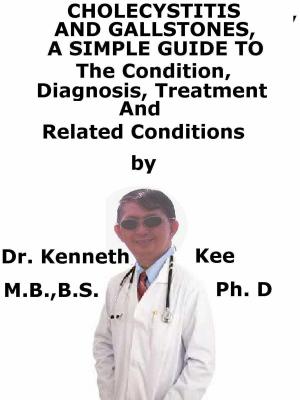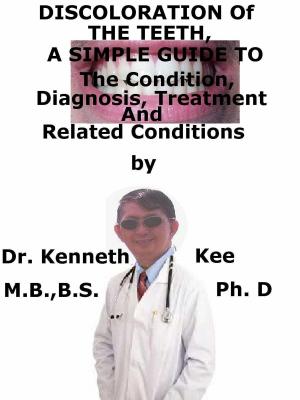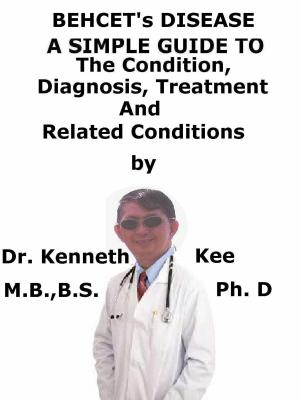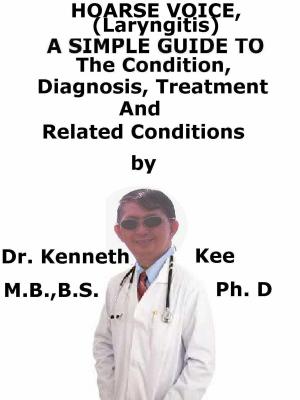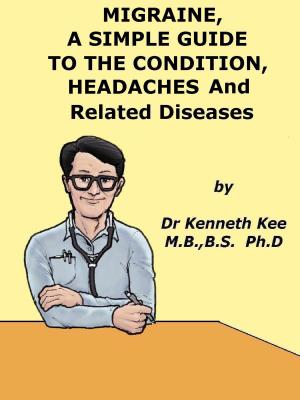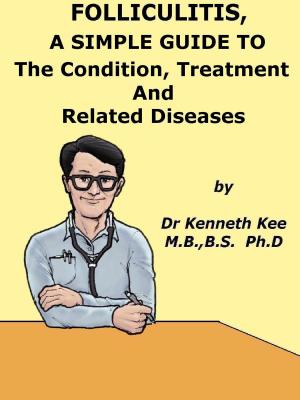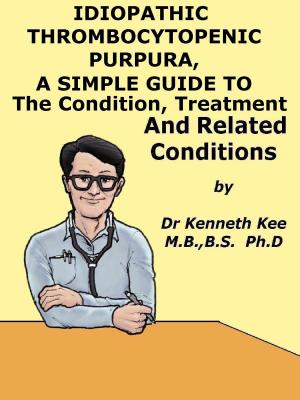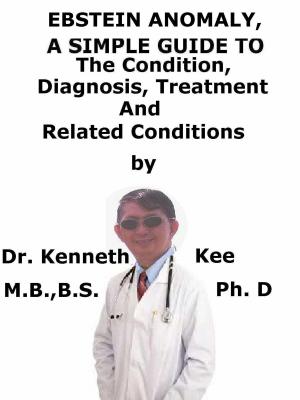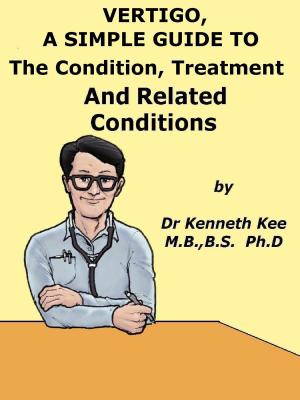Nystagmus, (Rapid Eye Movements) A Simple Guide To The Condition, Diagnosis, Treatment And Related Conditions
Nonfiction, Health & Well Being, Health, Ailments & Diseases, Nervous System & the Brain, Medical, Specialties, Internal Medicine, Neurology| Author: | Kenneth Kee | ISBN: | 9781370288915 |
| Publisher: | Kenneth Kee | Publication: | October 30, 2017 |
| Imprint: | Smashwords Edition | Language: | English |
| Author: | Kenneth Kee |
| ISBN: | 9781370288915 |
| Publisher: | Kenneth Kee |
| Publication: | October 30, 2017 |
| Imprint: | Smashwords Edition |
| Language: | English |
Nystagmus is a symptom seen as a repetitive, involuntary, to and fro oscillation of the eyes.
It may be congenital or acquired.
It is a symptom, not a diagnosis.
It is normally involuntary.
It may be physiological or pathological:
Physiological nystagmus happens:
1. During rotation of the body in space (vestibular nystagmus) or
2. During ocular following of moving scenes and acts to preserve clear vision (optokinetic nystagmus).
Pathological nystagmus induces the eyes to drift away from the visual target, hence degrading the vision
Nystagmus is a form of fast, uncontrollable movements of the eyes that may be:
1. Side to side (horizontal nystagmus)
2. Up and down (vertical nystagmus)
3. Rotary (rotary or torsional nystagmus)
Dependent on the cause, these movements may be in both eyes or in just one eye.
The involuntary eye movements of nystagmus are produced by abnormal function in the areas of the brain that control eye movements.
The part of the inner ear that senses movement and position (the labyrinth) helps regulate eye movements.
Causes of Nystagmus
Nystagmus may occur from lesions or malfunctions in many parts of the optic (optokinetic nystagmus) and vestibular (vestibular nystagmus) systems.
Most congenital nystagmus is neurological in origin, even though other important causes are:
1. Albinism,
2. Congenital cataracts,
3. Eye movement disorders and
4. Very high myopia or astigmatism.
Acquired nystagmus
The most frequent cause of acquired nystagmus is certain drugs or medicines.
1. Phenytoin (Dilantin) - an antiseizure medicine,
2. Excessive alcohol, or
3. Sedating medicine
All these medicines can impair the labyrinth's function.
Other causes are:
1. Head injury from motor vehicle accidents
2. Inner ear disorders such as labyrinthitis or Meniere disease
3. Stroke
4. Thiamine or vitamin B12 deficiency
5. Any brain disease, such as brain tumors
Acute nystagmus, with or without oscillopsia, may be linked with:
1. Ataxia,
2. Reduced visual acuity and
3. Falls.
Symptoms
Generally, late-acquired nystagmus and saccadic oscillations induce:
1. Oscillopsia,
2. Nausea and
3. Vertigo
In contrast, most nystagmus manifesting congenitally or in early childhood is not followed by oscillopsia.
Most patients with early-onset or congenital nystagmus also have decreased acuity.
Diagnosis
The doctor will take a careful history and do a complete physical examination, focusing on the nervous system and inner ear.
The doctor may ask the patient to wear a pair of goggles that magnify the eyes for part of the examination.
The patient may have these tests:
1. CT scan of the head
2. Electro-oculography: An electrical method of measuring eye movements using tiny electrodes
3. MRI of the head
4. Vestibular testing by recording the movements of the eyes
Treatment
Home Care
The patient may wish to make changes in the home to assist with dizziness, visual problems, or nervous system disorders.
There is no treatment for most patients of congenital nystagmus.
Treatment for acquired nystagmus is dependent on the cause.
In some patients, nystagmus cannot be reversed.
In instances due to medicines or infection, the nystagmus normally goes away after the cause has become better.
It may be conservative, medical (e.g., gabapentin, baclofen) or surgical.
The surgical treatment is unusual and requires changing the insertion of the relevant extra-ocular muscles.
Neurosurgery may be done where there is an underlying operable lesion.
Botulinum toxin injections can decrease some nystagmic movements even though results are normally temporary.
Gabapentin and memantine have also some success at reducing the effects of acquired nystagmus and are useful for congenital nystagmus
TABLE OF CONTENT
Introduction
Chapter 1 Nystagmus
Chapter 2 Causes
Chapter 3 Symptoms
Chapter 4 Diagnosis
Chapter 5 Treatment
Chapter 6 Prognosis
Chapter 7 Vertigo
Chapter 8 Meniere’s Disease
Epilogue
Nystagmus is a symptom seen as a repetitive, involuntary, to and fro oscillation of the eyes.
It may be congenital or acquired.
It is a symptom, not a diagnosis.
It is normally involuntary.
It may be physiological or pathological:
Physiological nystagmus happens:
1. During rotation of the body in space (vestibular nystagmus) or
2. During ocular following of moving scenes and acts to preserve clear vision (optokinetic nystagmus).
Pathological nystagmus induces the eyes to drift away from the visual target, hence degrading the vision
Nystagmus is a form of fast, uncontrollable movements of the eyes that may be:
1. Side to side (horizontal nystagmus)
2. Up and down (vertical nystagmus)
3. Rotary (rotary or torsional nystagmus)
Dependent on the cause, these movements may be in both eyes or in just one eye.
The involuntary eye movements of nystagmus are produced by abnormal function in the areas of the brain that control eye movements.
The part of the inner ear that senses movement and position (the labyrinth) helps regulate eye movements.
Causes of Nystagmus
Nystagmus may occur from lesions or malfunctions in many parts of the optic (optokinetic nystagmus) and vestibular (vestibular nystagmus) systems.
Most congenital nystagmus is neurological in origin, even though other important causes are:
1. Albinism,
2. Congenital cataracts,
3. Eye movement disorders and
4. Very high myopia or astigmatism.
Acquired nystagmus
The most frequent cause of acquired nystagmus is certain drugs or medicines.
1. Phenytoin (Dilantin) - an antiseizure medicine,
2. Excessive alcohol, or
3. Sedating medicine
All these medicines can impair the labyrinth's function.
Other causes are:
1. Head injury from motor vehicle accidents
2. Inner ear disorders such as labyrinthitis or Meniere disease
3. Stroke
4. Thiamine or vitamin B12 deficiency
5. Any brain disease, such as brain tumors
Acute nystagmus, with or without oscillopsia, may be linked with:
1. Ataxia,
2. Reduced visual acuity and
3. Falls.
Symptoms
Generally, late-acquired nystagmus and saccadic oscillations induce:
1. Oscillopsia,
2. Nausea and
3. Vertigo
In contrast, most nystagmus manifesting congenitally or in early childhood is not followed by oscillopsia.
Most patients with early-onset or congenital nystagmus also have decreased acuity.
Diagnosis
The doctor will take a careful history and do a complete physical examination, focusing on the nervous system and inner ear.
The doctor may ask the patient to wear a pair of goggles that magnify the eyes for part of the examination.
The patient may have these tests:
1. CT scan of the head
2. Electro-oculography: An electrical method of measuring eye movements using tiny electrodes
3. MRI of the head
4. Vestibular testing by recording the movements of the eyes
Treatment
Home Care
The patient may wish to make changes in the home to assist with dizziness, visual problems, or nervous system disorders.
There is no treatment for most patients of congenital nystagmus.
Treatment for acquired nystagmus is dependent on the cause.
In some patients, nystagmus cannot be reversed.
In instances due to medicines or infection, the nystagmus normally goes away after the cause has become better.
It may be conservative, medical (e.g., gabapentin, baclofen) or surgical.
The surgical treatment is unusual and requires changing the insertion of the relevant extra-ocular muscles.
Neurosurgery may be done where there is an underlying operable lesion.
Botulinum toxin injections can decrease some nystagmic movements even though results are normally temporary.
Gabapentin and memantine have also some success at reducing the effects of acquired nystagmus and are useful for congenital nystagmus
TABLE OF CONTENT
Introduction
Chapter 1 Nystagmus
Chapter 2 Causes
Chapter 3 Symptoms
Chapter 4 Diagnosis
Chapter 5 Treatment
Chapter 6 Prognosis
Chapter 7 Vertigo
Chapter 8 Meniere’s Disease
Epilogue
